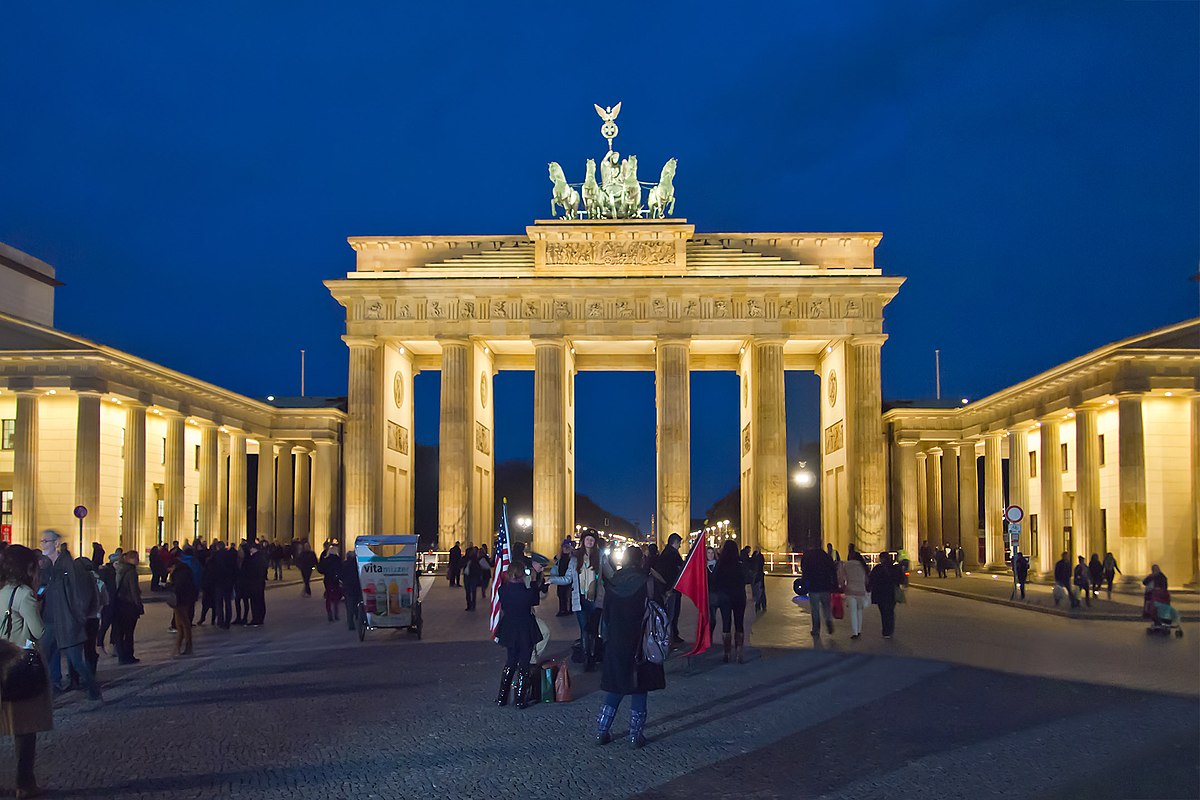Weekly Research
This week we discussed the many innovations and discoveries that were made during the years 1750-1850, especially in terms of typography and printmaking. I was especially interested in the Ukiyo-e paintings and woodblock prints that were most popular during the 17-19th Century. Especially in the case of Okumura Masonobu, I find myself inspired by the simplistic value that this art holds. Masonubu is known for his restraint in both flat line-work and minimal colour. I admire that this technique can convey so much emotion and story despite being very simple. It is also interesting to me that the Ukiyo-e art inspired the impressionists, changing the way paintings were approached. Ukiyo-e art opened up the possibility for free expression, that art didn’t have to be super intricate and realistic to be valuable. It could be anything the artist desired to make.

Carl Gotthard Langhans
Carl Gotthard Langhans was born in modern day Poland and designed one of the most famous pieces of architecture in the world: the Brandenburg Gate. He was not originally educated as an architect, but began his career by studying law from 1753-1757. At this point in time he became semi-interested in architecture and studied this subject using old Roman texts which began his career towards becoming a full-time architect.
(“Carl Gotthard Langhans”)
Langhans, in my opinion, was a fairly giving man and worked on a couple of projects that showed this characteristic. For example, he had the opportunity to rebuild the Count of Hatzfeldt’s palace after it was destroyed in World War II. Not only did he build it to the Count’s liking, he also built using his own unique style. This is very admirable to me as an artist who struggles with incorporating style and pleasing the customer. Like many architects at the time, he was very inspired by old Italian buildings. He even got a chance to travel to Italy to study the antique buildings in 1768 as a thank you for rebuilding this noble’s palace (“Carl Gotthard Langhans”). One can see the impact this trip had on his abilities to design as well.
As a neoclassical architect, Langhan was known for showcasing a simplistic yet grand appearance in his own designs. His “dramatic use of columns” and gigantic walls challenged the intricate, naturalistic design that was the Rococo style prior to it (Britannica). Neoclassical revealed a new approach to both construction and decoration, showing that architecture could be both simple and grand at the same time.
Brandenburg Gate
Langhan’s work is some of the earliest examples of Neoclassical architecture in Germany, the Brandenburg Gate is his most famous work and a national symbol today of the reunification of East and West Berlin in 1989(“Carl Gotthard Langhans”). The gate is seen as a symbol of peace for Germany, especially after it was destroyed during World War II. The rebuilding of the gate was significant because it symbolized a new start for Germany and for the world.
The gate itself was “modeled… after the propylaeum of the Athenian Acropolis” in Greece (Britannica). The resemblance can definitely be seen, especially with the giant columns and various sized entrances. However, there are also noticeable differences within the architecture. For example, the roof has been flattened and conveys a more geometric feel. There is also no use of colour within Langhans’ style (except for the statues which were implemented by another artist), where as the propylaea is proposed to have had colour as part of it’s design.

Propylaea in the Athenian Acropolis

Brandinburg Gate in Berlin, Germany
More specific features as follows:
- Gate Measurements: 20m. high / 65m. wide / 11m. deep
- Material: Sandstone
- Passageways: Central passage wider for royal court useage, outer passages for ordinary citizens
- Columns: 12 Doric columns (6 on each side), the farthest on the sides used to accommodate toll collectors, soldiers, and guards on duty
Conclusion
Carl Gotthard Langhans created one of the most famous and meaningful pieces of architecture in history: the Brandenburg Gate. It became a beacon of peace for Germany and worldwide.
–
Work Cited
“Brandenburg Gate.” Britannica Concise Encyclopedia, Encyclopaedia Britannica, Britannica Digital Learning, 2017. Credo Reference, https://ezproxy.capilanou.ca/login?url=https://search.credoreference.com/content/entry/ebconcise/brandenburg_gate/0?institutionId=6884. Accessed 10 Oct. 2018.
https://www.britannica.com/art/Neoclassical-architecture
https://www.designingbuildings.co.uk/wiki/Brandenburg_Gate
https://en.wikipedia.org/wiki/Carl_Gotthard_Langhans